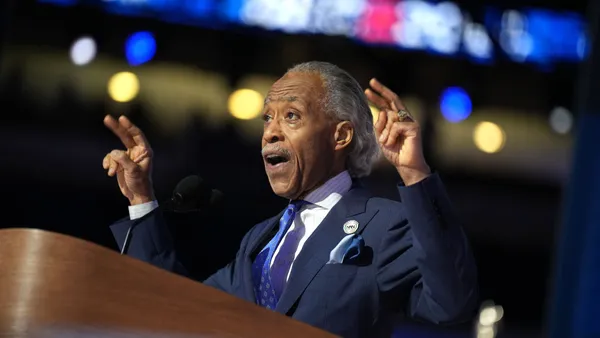Dive Brief:
- The average tenure of chief marketing officers at Fortune 500 companies shows signs of stabilizing, though volatility remains high at leading consumer brands, according to Spencer Stuart’s latest report tracking trends for the C-suite role.
- Among the most consumer-focused advertisers in the top 100, the average CMO tenure was 3.1 years in 2023, notably lower than the overall average of 4.2 years. The 4.2-year finding was in line with 2022’s figures and sits just below the 4.6-year average for all C-suite leadership spots.
- Over one-fifth (22%) of business-to-consumer marketing chiefs were in the role for one year or less in 2023. Further, 71% of all Fortune 500 CMOs were acting in that function for the first time, a figure that climbs to 74% among the top-100 advertisers — the highest percentage recorded since Spencer Stuart began tracking the measure in 2016.
Dive Insight:
CMOs are regarded as experiencing high churn, a reputation that has been reinforced through research like Spencer Stuart’s assessment of the position that is now in its 20th year. The latest annual report from the executive search firm found that Fortune 500 CMOs, broadly speaking, aren’t that much worse off than other C-suite members when it comes to tenure. It’s marketing chiefs at the biggest consumer advertisers that face the most intense volatility.
This insight could be attributed to a few factors. CMOs at top-100 advertisers have to manage massive media budgets, performance that is often subject to the pressures of the public markets and brands that are promoted to a mass audience, making them potentially riper targets for scrutiny as culture wars increasingly affect consumer perceptions. In some cases, juggling new technology, such as artificial intelligence, and growth mandates have fallen under the CMO.
Marketing chiefs in a broader sense are wearing more hats, though that isn’t always a negative. Among Fortune 500 CMOs, 34% were in charge of functions in addition to marketing last year, such as communications, per Spencer Stuart. Taking on extra duties can be a stepping stone to bigger gigs, with 68% of exiting Fortune 500 CMOs either being promoted internally or taking a lateral or larger role elsewhere, the report said.
Several blue-chip brands have recently tapped marketers for their top jobs. Taco Bell last year appointed brand chief Sean Tresvant as CEO while Starbucks in March named global marketing chief Brady Brewer to chief executive of international operations, part of an organizational shuffle. The coffee chain retired the global CMO title with the pivot.
In line with keeping things in the family, 58% of Fortune 500 CMOs were promoted from within last year, up from 54% in 2022, according to Spencer Stuart. This trend was more apparent at business-to-business firms, where 63% were likely to do an internal hire versus 53% of B2C brands.
“The increase in internal promotions and first-time CMOs suggests that CEOs are increasingly willing to bet on the potential of those they already know, and that organizations are wisely investing in leadership development and succession planning for the CMO role,” Spencer Stuart said in the report.
At the same time, companies are getting comfortable looking outside of their verticals for marketing leadership. Last year, 43% of externally recruited Fortune 500 CMOs were brought in from a different industry compared to 37% in 2022.
Examining the role from a diversity perspective, women achieved parity with men to represent half of Fortune 500 CMOs in 2023. That figure was higher for the top-100 advertisers, where 52% of marketing leadership positions were held by women, a minor decrease from 2022.
That said, Spencer Stuart found that racial and ethnic representation has dropped, with underrepresented groups making up just 12% of Fortune 500 CMO roles in 2023 versus 14% in 2022. The firm’s findings align with other industry research that indicates marketing workforce diversity has slipped even as gender equality has improved.
Over time, Spencer Stuart has factored more data sets into its CMO study to uncover additional nuances within the role. The report analyzes CMOs at companies featured in Ad Age’s Leading National Advertisers list, as well as named CMOs in the Fortune 500.
















